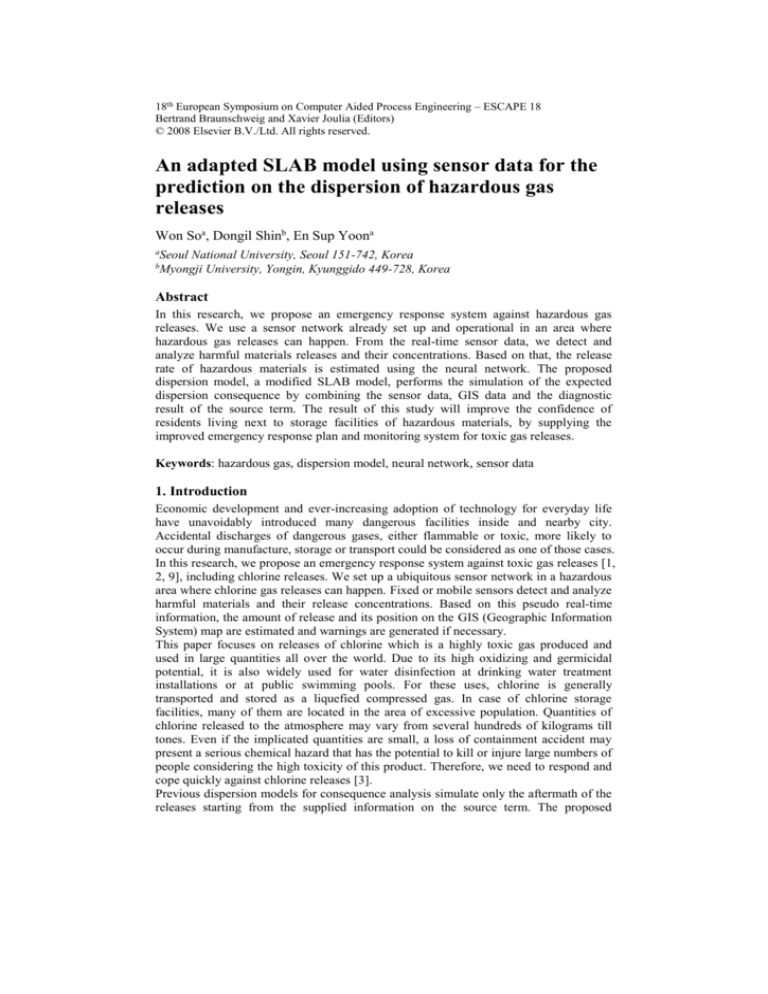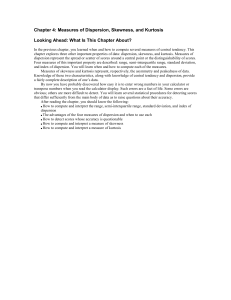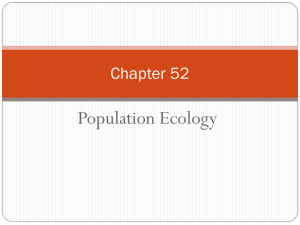
18th European Symposium on Computer Aided Process Engineering – ESCAPE 18
Bertrand Braunschweig and Xavier Joulia (Editors)
© 2008 Elsevier B.V./Ltd. All rights reserved.
An adapted SLAB model using sensor data for the
prediction on the dispersion of hazardous gas
releases
Won Soa, Dongil Shinb, En Sup Yoona
a
b
Seoul National University, Seoul 151-742, Korea
Myongji University, Yongin, Kyunggido 449-728, Korea
Abstract
In this research, we propose an emergency response system against hazardous gas
releases. We use a sensor network already set up and operational in an area where
hazardous gas releases can happen. From the real-time sensor data, we detect and
analyze harmful materials releases and their concentrations. Based on that, the release
rate of hazardous materials is estimated using the neural network. The proposed
dispersion model, a modified SLAB model, performs the simulation of the expected
dispersion consequence by combining the sensor data, GIS data and the diagnostic
result of the source term. The result of this study will improve the confidence of
residents living next to storage facilities of hazardous materials, by supplying the
improved emergency response plan and monitoring system for toxic gas releases.
Keywords: hazardous gas, dispersion model, neural network, sensor data
1. Introduction
Economic development and ever-increasing adoption of technology for everyday life
have unavoidably introduced many dangerous facilities inside and nearby city.
Accidental discharges of dangerous gases, either flammable or toxic, more likely to
occur during manufacture, storage or transport could be considered as one of those cases.
In this research, we propose an emergency response system against toxic gas releases [1,
2, 9], including chlorine releases. We set up a ubiquitous sensor network in a hazardous
area where chlorine gas releases can happen. Fixed or mobile sensors detect and analyze
harmful materials and their release concentrations. Based on this pseudo real-time
information, the amount of release and its position on the GIS (Geographic Information
System) map are estimated and warnings are generated if necessary.
This paper focuses on releases of chlorine which is a highly toxic gas produced and
used in large quantities all over the world. Due to its high oxidizing and germicidal
potential, it is also widely used for water disinfection at drinking water treatment
installations or at public swimming pools. For these uses, chlorine is generally
transported and stored as a liquefied compressed gas. In case of chlorine storage
facilities, many of them are located in the area of excessive population. Quantities of
chlorine released to the atmosphere may vary from several hundreds of kilograms till
tones. Even if the implicated quantities are small, a loss of containment accident may
present a serious chemical hazard that has the potential to kill or injure large numbers of
people considering the high toxicity of this product. Therefore, we need to respond and
cope quickly against chlorine releases [3].
Previous dispersion models for consequence analysis simulate only the aftermath of the
releases starting from the supplied information on the source term. The proposed
2
A. Firstauthor et al.
dispersion model, a modified SLAB model, performs the real-time diagnosis of the
source term using the inverse tracking algorithm and simulates the expected dispersion
consequence by combining the sensor data, meteorological data, and GIS data.
Figure 1 shows the overall framework of the consequence analysis and prediction about
hazardous material releases in the city. The result of this study may help improving the
confidence of residents living next to chlorine storage facilities by supplying an
improved emergency respond plan and monitoring system for various toxic gas releases.
Figure 1. Integration of prediction and consequence analysis modules
2. Theory
The purpose of atmospheric dispersion modeling is to provide, if all the input data are
known, the observed concentrations downwind of the source of release. The source
information, GIS data, and meteorological conditions are required to solve an
atmospheric dispersion problem. For the problem we’re interested in, we have
concentration data from sensor, GIS information, and meteorological condition. Thus,
we need a system to get us the source model from the concentration data.
2.1. Neural Network
Neural networks enable us to develop and implement the new method with easy and
accuracy. They produce the weight vector to optimize the model by competing learning.
We set the 14 input variables [Table 1]. We implemented neural networks using
MATLAB7.0 program [Figure 2].
Figure 2. Diagram of Neural Network used in MTLAB
Type the title of your paper
3
Sensor data
Material DB
Input
Source information
Meteorological
conditions
Output
Variables
Unit
100m Concentration
Molecular density
Molecular weight
Boiling point
Heat capacity
Heat of vaporization
Storage pressure
Storage temperature
Relative humidity
Air pressure
Air temperature
Wind direction
Air stability
Wind velocity
ppm
g/l
g
K
KJ/(mol • K)
KJ/ mol
bar
K
%
bar
K
1~8
1~6
m/s
Release rate
Kg/s
Table 1. The input variables of the model
In this research, we propose a new model for tracking of release rate from the
concentration data of sensor. The newly proposed model was built using the 300 data to
obtain through PHAST. We divided the raw data into two, are for training(200) and
validation(100). We used the replacement node especially “mean node” to replace
missing values because there were many missing values in the raw data. And we set the
10 hidden units as networks, added the linear regression mode and created a model by
averaging the predicted values. Ensemble node can improve the performance for the
generalization.
2.2. Dispersion Model
SLAB is a computer model that simulates the atmospheric dispersion of denser-than-air
releases. The types of releases treated by the model include a ground-level evaporating
pool, an elevated horizontal jet, a stack or elevated vertical jet, and an instantaneous
volume source. Atmospheric dispersion of the release is calculated by solving the
conservation equations of mass, momentum, energy, and species. The conservation
equations are spatially averaged so as to treat the cloud as a steady state plume, a
transient puff, or a combination of the two depending upon the duration of the release [4,
5]. The mathematical descriptions of the physics of heavy gas dispersion, as well as the
description of the normal atmospheric advection and turbulent diffusion processes, are
inherently included in the conservation equations. The time-averaged concentration
predicted by SLAB depends on not only the various physical phenomena associated
with the dispersion equations, but also on the specified concentration averaging time.
This is due to cloud meander. As the concentration averaging time is increased, more
cloud meander can occur resulting in an effectively wider cloud. The three-dimensional
volume concentration distribution c(x, y, z) is obtained by assuming the crosswind
profiles.
Atmospheric dispersion concentrations are obtained by solving the SLAB model with
the tracking method. However, the existing SLAB model assumes steady state in case of
the continuous releases. This assumption makes a simple calculation procedure
possible, but brings inaccuracy. We modified the SLAB model to make it simulate the
unsteady releases as well (see Fig. 3 for details). We seek for source information from
4
A. Firstauthor et al.
the inverse tracking algorithm and build up the dispersion model through the adapted
SLAB model. We analyze the atmospheric dispersion magnitude and predict the
dispersion path of the hazardous materials, especially for the area of excessive
population.
Decision of step time
(Calculation repeated)
Decision of unit discharge quantity
Calculation about momentum effect
Set up of calculation time step
(Calculation repeated)
Decision of vapor cloud form
Mass balance calculation
Energy balance calculation
Entrainment calculation
Synthesis of calculation results
Figure 3. Handling of unsteady continuous releases
I proposes adaptive slab algorithm through new methodology(see Fig. 4 for details).
Figure 4. Adaptive slab algorithm
3. Result
First, the suggested tracking method using neural network was proved to predict the
release rate. The predicted values were found to fit in well in the experimental ones. In
case of training, it has 7% error rate and validation has 12%.
Type the title of your paper
5
Training data
P_Rate
Validation data
P_Rate
Rate
Rate
Figure 5. Fitness analysis in the estimation of release rate for training data & Validation data
Second, when compared to SAFER, the proposed dispersion model was proved fit in
well about short distance.
Material
Chlorine
Molecular weight
71
Leak diameter [mm]
50
-34
Storage temp. [C]
Relative humidity[%]
30
Air pressure [atm]
1
27
Air temp. [C]
Wind velocity [m/s]
1
Air stability
D
Table 2. The input values of the dispersion model
Figure 5. Compared to SAFER in case of release rate 15kg/min, 30kg/min
4. Conclusion
The developing system is expected to include real-time linked source emissions
modules, meteorological modules, transport and dispersion modules, and exposure and
risk modules. There is a need for efficiently communicating data and generating model
predictions across large distances. Much more work is anticipated on inverse modelling
or source-finding, where observations are used to narrow down the suspected region
6
A. Firstauthor et al.
(like triangulation in [6]) to identify the location and magnitude of a release. Research
needs also include better parameterizations of mean flow vectors and turbulence for all
time periods and surface types, improved methods of real-time modelling using limited
and missing inputs, development of criteria for the best expected model agreement with
observations, and optimization of methods to use new remote data systems.
The result of this study and more validation work will improve the confidence of
residents living next to hazardous material storage facilities by supplying them the
improved emergency response plan and real-time monitoring system for various
hazardous gas releases.
References
1. M. Abbaspour, N. Mansuri, 2005, “City hazardous gas monitoring network”, J. of Loss
Prevention in the Process Ind., 18, pp.481-487.
2. S. Alhajraf, L. Al-Awadhi, S. Baby, 2005, “Real-time response system for the prediction of the
atmospheric transport of hazardous materials”, J. of Loss Prevention in the Process Ind., 18,
pp.520-525.
3. A. Dandrieux, J. P. Dimbour, G. Dusserre, 2006, “Are dispersion models suitable for
simulating small gaseous chlorine releases?”, J. of Loss Prevention in the Process Ind., 19,
pp.683-689.
4. D. L. Ermark, 1990, An Atmospheric Dispersion Model for Denser-than-Air Releases,
Lawrence Livermore National Laboratory.
5. S. R. Hanna, P. J. Drivas, 1987, Guidelines for use of vapor cloud dispersion models, Center
for Chemical Process Safety, American Institute of Chemical Engineers, New York.
6. G. T. Nofsinger, 2006, Tracking Based Plume Detection, Ph.D. Thesis, Dartmouth College.
7. Donald B. Reid, 1979, “An Algorithm for Tracking Multiple Targets”, IEEE Transactions on
Automatic Control, 6, pp.843-854.
8. Lawrence D. Stone, Carl A. Barlow, Thomas L. Corwin, 1999, Bayesian Multiple Target
Tracking, Artech House Publishers.
9. Feng Zhao, Jie Liu, Leonidas Guibas, James Reich, 2003, “Collaborative signal and
Information Processing: An Information Directed Approach”, Proceedings of the IEEE, 8,
pp.1199-1209.
10. Susan Rebano-Edwards, 2007, Modelling perceptions of building quality-A neural network
approach, Building and Environment, 42, pp.2762-2777









